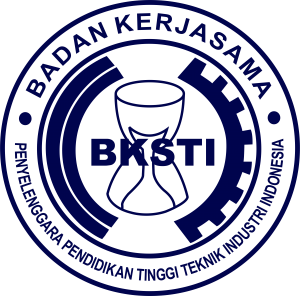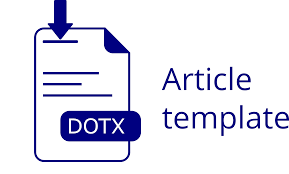ANALISIS RISIKO PADA SUPPLY CHAIN MANAGEMENT MENGGUNAKAN FRAMEWORK ISO 31000:2009 (STUDI KASUS: PT. XYZ)
DOI:
https://doi.org/10.37090/indstrk.v4i2.234Keywords:
Supply Chain; Supply Chain Risk Management; ISO 31000:2009Abstract
The current supply chain is very much less vulnerable to uncertainty and risks that can disrupt the supply chain which can lead to losses in the form of income, competitive advantage and profits if not managed effectively. Supply chain risk management is the management of supply chains through coordination or collaboration between supply chain partners to ensure profitability and continuity. PT. XYZ is a company that focuses on printer and parts distributors. PT.XYZ's activities which are always in touch with suppliers, consumers and management between the center and branches have various kinds of risks, which can cause the company not to achieve the desired target. This study aims to identify supply chain risks at PT. XYZ using the ISO 31000: 2009 framework and how mitigation solutions are carried out to reduce existing risks. The results of this study indicate that 20 risk indications have been evaluated. The identification is classified into 7 risk categories, namely operational, supply, demand, information, policy, product and finance. Based on the risk analysis, it is known that the risk occurs in operations. Operational risk is related to the ability of employees to offer products and has an impact on the level of company revenue and the lack of a procurement workforce resulting in difficulties in fulfilling the demand for each branch.
Downloads
References
Agrell, P. J., Lindroth, R., & Norrman, A. (2004). Risk, Information and Incentives in Telcom Supply Chain. International Journal Production Economic, 90, 1-16.
Blome, C., & Scoenherr, T. (2011). Supply Chain Risk Management in Financial Crises—A Multiple Case Study Approach. International journal Production Economic, 134, 43-57.
Caldwell, N., Harland, C., Powell, P., & Zheng, J. (2013). Impact of e-business on perceived supply chain risks. Journal of Small Business and Enterprise Development, 20 (4), 688-715.
Chen, H. L. (2018). Supply Chain Risk’s Impact on Corporate Financial performance. International Journal of Operations & Production Management, 38 (3), 713-731.
Choi, T. M., Wallace, S. W., & Wang, Y. (2016). Risk Management and Coordination in Service Supply Chain: Informantion, Logistics and Outsourcing. Journal of the Operational Research Society, 67, 159-164.
Choo, B. S. (2015). Pragmatic Adaptation of the ISO 31000:2009 Enterprise Risk Management Framework in a Hihg-Tech Organization Using Six Sigma. International Journal of Accounting & Information Management, 23 (4), 364-382.
Commitee of Sponsoring Organization of the Treadway Commission (COSO). (2004). Enterprise risk management-Integrgrates framework. Retrieves from https://www.coso.org/ERM -IntegratedFramework.htm.
Diabat, A., Govindan, K., & Panicker, V. V. (2012). Supply Chain Risk Management and its Mitigation in a Food Industry. International Journal of Production Research, 50 (11), 3039-3050.
Dutta, P., Suryawanshi, P., Gujarathi, P., & Dutta, A. (2019). Managing Risk for E-Commerce Supply Chain: an Empirical Study. 9th IFAC Conference on Manufacturing Modelling, Management and Control, 52 (13) (pp. 349-354). Berlin, Germany, 28-30 August 2019.
Ernawati, T., Suhardi., & Nugroho, D. R. (2012). IT Risk Management Framework Based on ISO 31000:2009. International Conference on System Engineering and Technology,(pp. Sepetember 11-12, 2012, Bandung, Indonesia.
Faisal, N. M., Banwet, D. K., & Shankar, R. (2007). Information Risks Management in Supply Chain: an Assessment and Mitigation Framework. Journal of Enterprise Information Management, 20 (6), 677-699.
Florea, R & Florea, R. (2016). Internal Audit Risk Management. ISO 31000 and ERM Approaches. Economy Trandisciplinarity Cognition www.ugb.ro/ect, 19 (1), 72-77.
Ghadge, A., Dani, S., Chester, M., & Kalawsk, R. (2013). A System Approach for Modelling Supply Chain Risks. Supply Chain Management: An International Journal, 18 ( 5), 523-538.
Handayani, D. I. (2016). A Review: Potensi Risiko pada Supply Chain Risk Management. Spektrum industri, 14 (1), 25-35.
Ho, W., Zheng, T., Yildiz, H., & Talluri.S. (2015). Supply Chain Risk Management: A Literature Review.International Journal of Production Research, 53 (16), 5031-5069.
International Standar of Organizatition ISO 31000. (2009). Risk Management Principle and Guidlines. First Edition 2009 11-15, Ganeva. Switzerland.
Jüttner, U. (2005). Supply Chain Risk Management Understanding the Business Requirment from a Practitioner Perspective. The International journal of Logistics Management, 16 (1), 120-141.
Karanja, E. (2017). Does the hiring of Chief Risk Officers Align with the COSO/ISO Enterprise Risk Management Framework? International Journal of Accounting & Information Management, 25 (3), 274-295.
Khan, O., & Christopher, M. (2008). The Impact of Product Design on Supply Chain Risk: a Case Study. International Journal of Physical Distribution & Logistics Management, 38 (5), 412-432.
Kumar, S., Himes, K.T., & Kritzer, C.P. (2014). Risk Assessment and Operational Approach to Managing Risk in Global Supply Chain. Journal of manufacturing Technology Management, 25 (6), 873-890.
Kumar, V., Bal, O., Guo, R., Shaw, S., Colicchia, C., Garza-Reyes, J., & Kumar.A. (2018). An Empirical Analysis of Supply and Manufacturing Risk and Business Performance: a Chinese Manufacturing Supply Chain Perspective. Supply Chain Management, 36 (6,) 461-479.
Lavastre, O., Gunasekaran, A., & Spalanzani. (2012). Supply Chain Risk Management in french Companies. Decision Support System, 53, 828-838.
Lesisa, T. G., Mamewick, A., & Nel, H. (2018). The Identification of Supplier Selection Criteria Within a Risk Management Framework Toward Consistent Supplier Selection. IEEE International Conferance Industrial Engineering and Engineering Management (IEEM), (pp. 913-917). Bangkok.
Manuj, I., & Mentzer, J.T. (2008). Global Supply Chain Management. Journal of Business Logistics, 29 (1), 135-155.
Mensah, P., Merkuryev, Y., Klavins., & Manak S. (2017). Supply Chain Risk Analysis of a Logging Company. Procedia Computer Science, 104, 313-320.
Norman, A., & Jansson, U. (2004). Ericson’s Proactive Supply Chain Risk Management Approach After a Serious Sub-Supplier Accident. International Journal of Physical Distribution & Logistics Management, 34 (5), 436-456.
Olson, D, L., & Wu, D. D. (2010). A Review of Enterprise Risk Management in Supply Chain. Kybernetes, 39 (5), 694-706.
Oliveira, U. R., Marins, F. A. S., Rocha, H. M., & Salomon, V. A. P. (2017). The ISO 31000 Standard in Supply Chain Risk Management. Journal of Cleaner Production, 151, 616-633.
Purdy, G. (2010). ISO 31000:2009-Setting a New Standard for Risk Management. Risk Analysis, 30 (6), 881-886.
Raka, C., & Liangrokapart, J. (2015). Supply Chain Risk Management: A Case Study in Thailand. Proceeding of the Hamburg International Conference of Logistics (HICL) (vol.20, pp.557-580). Hambrug.
Rao, S., & Goldsby, T. J. (2009).Supply Chain Risks: A Review and Typology. The International Journal of Logistics Management, 20 (1), 97-13.
Scannell, T., Curkovic, S., & Wagner, B. (2013a). Integration of ISO 31000:2009 and Supply Chain Risk Management. American Journal of Industrial and Business management, 3, 367-377.
Scannell, T., Curkovic, S.,& Wagner, B. (2013b). Integration of ISO 31000:2009 Enterprise and Supply Chain Risk Management: a Longitudinal Study. American Journal of Industrial and Business management, 3, 614-630.
Selviaridis, K., & Norrman, A. (2014). Performance-Based Contracting in Service Supply Chain: a Service Provider Risk Perspective. Supply Chain Management: An International Journal, 19 (2), 153-172.
Stefanus, A., & Hartono, M. (2018). A Framework for Evaluating the Performance of Supply Chain Risk in E-Commere. Proceeding of the International Conference on industrial Engineering and Operation Management, (pp. 1887-1894), March 6-8; Bandung, Indonesia.
Tang, C. S. (2006). Perspective in Supply Chain Risk Management. International Journal Production Economics, 13, 451-488.
Tjaja, A. I. S., Sekartyasto, D. R., & Imran, A. (2019). Meminimasi Risiko pada Rantai Pasok Menggunakan Kerangka Kerja Supply Chain Risk Management di PT. Adhi Chandra Dwiutama. Jurnal Rekayasa Hijau, 3 (1), 29-40.
The Charter Quality Institute. (2010). A guide to supply chain risk management for the pharmaceutical and medical device industries and their suppliers. [pdf] London: The Chartered Quality Institute. Available at: https://www.thecqi.org/Documents/community/Special-Interest-Groups/Pharmaceutical/ PQG-Guide-to-Supply-Chain-Risk-Management-V-1-0-2010.pdf>.
Tummala, R & Schoenherr, T. (2011). Assessing and Managing Risk Using the Supply Chain Risk Management Process (SCRMP). Supply Chain Management: An International Journal, 16 (16), 473-483.
Wu, D. D., & Olson, D. L. (2009). Enterprise risk management: small business scorecard analysis. Production Planning & Control: The Management of Operations, 20 (4), 362-369.









